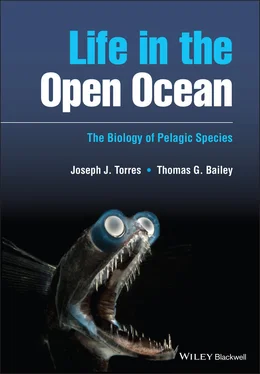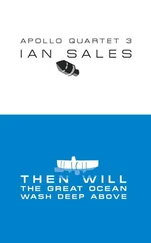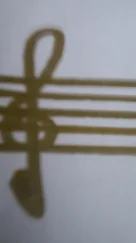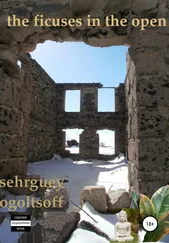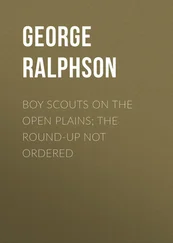Joseph J. Torres - Life in the Open Ocean
Здесь есть возможность читать онлайн «Joseph J. Torres - Life in the Open Ocean» — ознакомительный отрывок электронной книги совершенно бесплатно, а после прочтения отрывка купить полную версию. В некоторых случаях можно слушать аудио, скачать через торрент в формате fb2 и присутствует краткое содержание. Жанр: unrecognised, на английском языке. Описание произведения, (предисловие) а так же отзывы посетителей доступны на портале библиотеки ЛибКат.
- Название:Life in the Open Ocean
- Автор:
- Жанр:
- Год:неизвестен
- ISBN:нет данных
- Рейтинг книги:5 / 5. Голосов: 1
-
Избранное:Добавить в избранное
- Отзывы:
-
Ваша оценка:
- 100
- 1
- 2
- 3
- 4
- 5
Life in the Open Ocean: краткое содержание, описание и аннотация
Предлагаем к чтению аннотацию, описание, краткое содержание или предисловие (зависит от того, что написал сам автор книги «Life in the Open Ocean»). Если вы не нашли необходимую информацию о книге — напишите в комментариях, мы постараемся отыскать её.
Life in the Open Ocean: The Biology of Pelagic Species
Life in the Open Ocean: The Biology of Pelagic Species
Life in the Open Ocean — читать онлайн ознакомительный отрывок
Ниже представлен текст книги, разбитый по страницам. Система сохранения места последней прочитанной страницы, позволяет с удобством читать онлайн бесплатно книгу «Life in the Open Ocean», без необходимости каждый раз заново искать на чём Вы остановились. Поставьте закладку, и сможете в любой момент перейти на страницу, на которой закончили чтение.
Интервал:
Закладка:
Table 3.5 Classification of the order Siphonophora.
Source: Totton (1965), A Synopsis of the Siphonophora, British Museum of Natural History.
| Family | Genus | |
|---|---|---|
| Suborder Cystonectae | ||
| 1. Physaliidae | Physalia | |
| 2. Rhizophysidae | Rhizophysa, Bathyphysa, Epibulia | |
| Suborder Physonectae | ||
| 3. Apolemiidae | Apolemia | |
| 4. Agalmidae | Agalma, Halistemma, Cordagalma Marrus, Moseria, Nanomia, Erenna, Lychnagalma | |
| 5. Pyrostephidae | Pyrostephos, Bargmannia | |
| 6. Physophoridae | Physophora | |
| 7. Athorybiidae | Athorybia, Melophysa | |
| 8. Rhodaliidae | Rhodalia, Stephalia, Angelopsis, Archangelopsis, Dromalia | |
| 9. Forskaliidae | Forskalia | |
| Suborder Calycophorae | ||
| 10. Prayidae | ||
| Amphicaryoninae | Amphicaryon, Maresearsia | |
| Prayinae | Rosacea, Praya, Prayoides, Lilyopsis, Desmophyes, Stephanophyses | |
| Nectopyramidinae | Nectophyramis | |
| 11. Hippopodiidae | Hippopodius, Vogtia | |
| 12. Diphyidae | ||
| Sulculeolariinae | Sulculeolaria | |
| Diphyinae | Diphyes, Lensia, Muggiaea, Dimophyes, Chelophyes, Eudoxoides, Eudoxia | |
| 13. Clausophyidae | Clausophyes, Chuniphyes, Crystallophyes, Heterophyramis, Thalassophyes | |
| 14. Sphaeronectidae | Sphaeronecties | |
| 15. Abylidae | ||
| Abylinae | Ceratocymba, Abyla | |
| Abylopsinae | Abylopsis, Bassia, Enneagonum |
Gonozooids, which are polypoid in origin, are the structures that bear the reproductive gonophores, which are medusoid. They usually are branched stalks called gonodendra ( Figure 3.26c)
Medusoid zooids comprise the swimming bells or nectophores ( Figure 3.27), the bracts ( Figure 3.28), the gonophores, and the gas‐filled float or pneumatophore ( Figure 3.29).
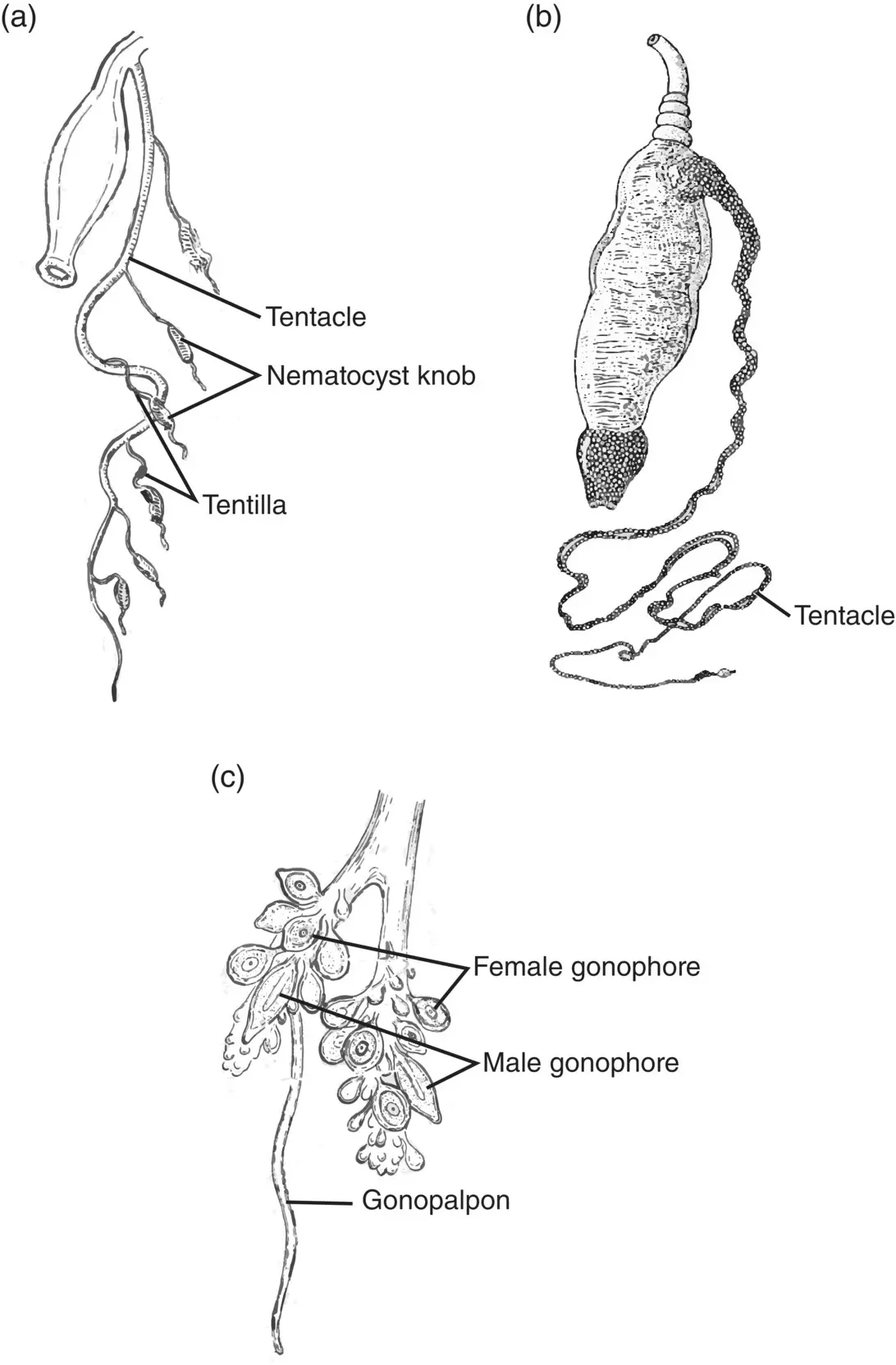
Figure 3.26 Siphonophore zooids. (a) Gastrozooid. (b) Dactylozooid. (c) Gonozooid (gonodendron).
Sources: (a and c) Adapted from Hyman (1940), figure 148 (p. 470); (b) Bayer and Owre (1968), figure 89 (p. 54).
Nectophores come in a variety of different shapes, ranging from medusa‐like to partially flattened rhomboids, to prismatic ( Figure 3.27). All are muscular since they are the zooids responsible for the locomotion of the colony and must be able to contract forcefully to provide jet propulsion. Nectophores all have radial canals, usually four, which speaks to their medusoid origins.
Bracts also come in a wide diversity of shapes. Unlike the nectophores, which must retain some internal volume for the water that is ejected to provide jet propulsion for the colony, bracts are often solid chunks of jelly that are believed to serve a protective function for the colony. They are robust and gelatinous; much of the time they are the only recognizable part of a formerly intact animal after it has been captured in a net. Shapes for bracts have been described as leaf‐like, pyramidal, and helmet‐shaped ( Figure 3.28), and they often have remnant radial canals. They resemble the pieces of an exquisitely complex three‐dimensional gelatinous jigsaw puzzle. The oceanographers able to classify siphonophores to species with just the pieces are to be regarded with awe!
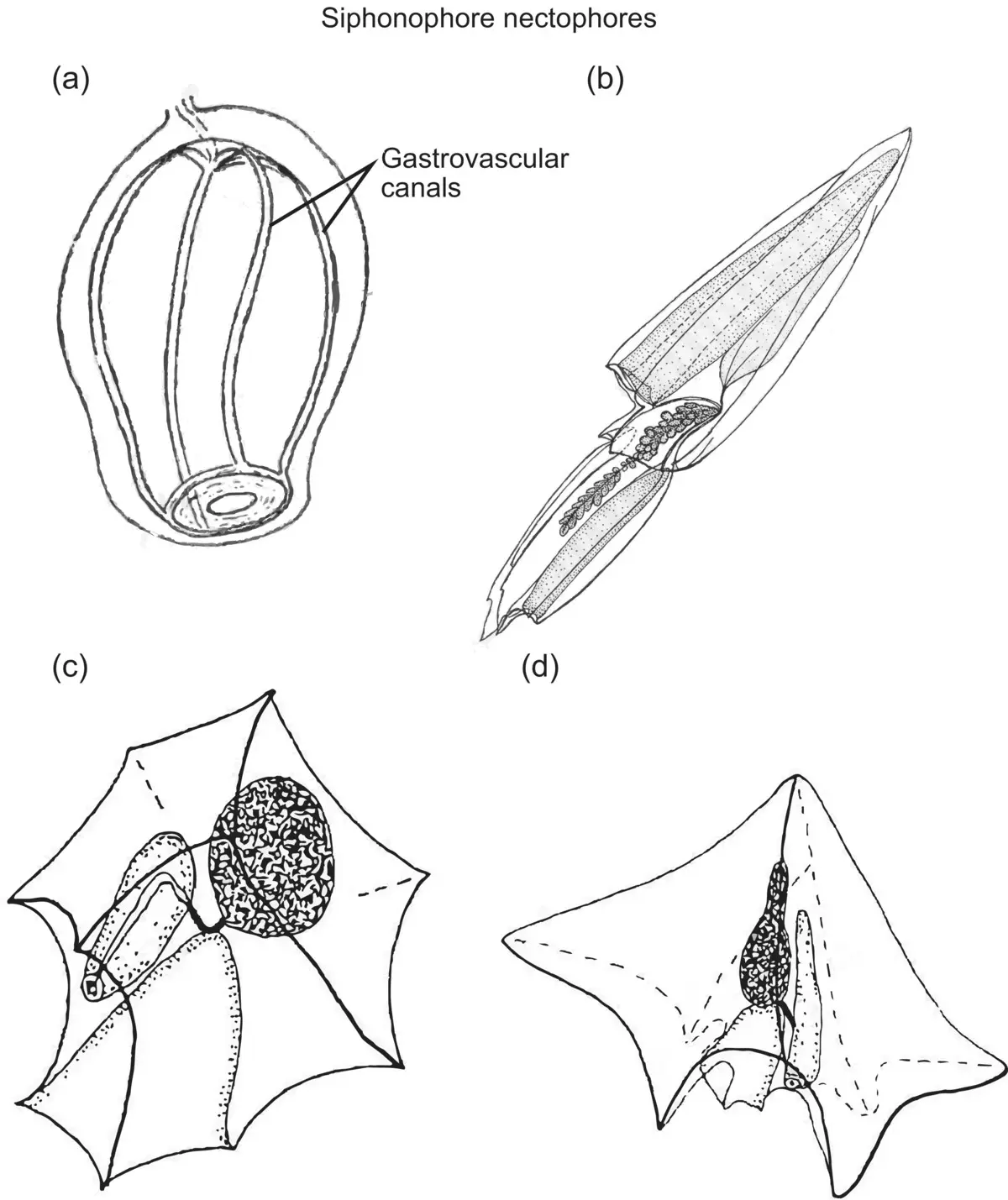
Figure 3.27 Siphonophore nectophores. (a) Basic unmodified nectophore. (b) Calycophoran, family Diphyidae; (c) Calycophoran, Bassia bassensis ; (d) Calycophoran, Enneagonum hyalinum .
Sources: (a) Hyman (1940), figure 148 (p. 470); (b) Adapted from Pugh (1999), figure 2 (p. 477); (c) Pugh (1999), figure 3.131 (p. 509); (d) Pugh (1999), figure 3.132 (p. 509).
Gonophores take many shapes, ranging from what appears to be an intact medusa with the sexual organs taking the place of a manubrium to the more rudimentary sacs observed in Figure 3.26c. Gonophores are dioecious, bearing only male or female gametes. The siphonophore colony as a whole is hermaphroditic; male and female gonophores may be found within the same cluster or may be borne separately.
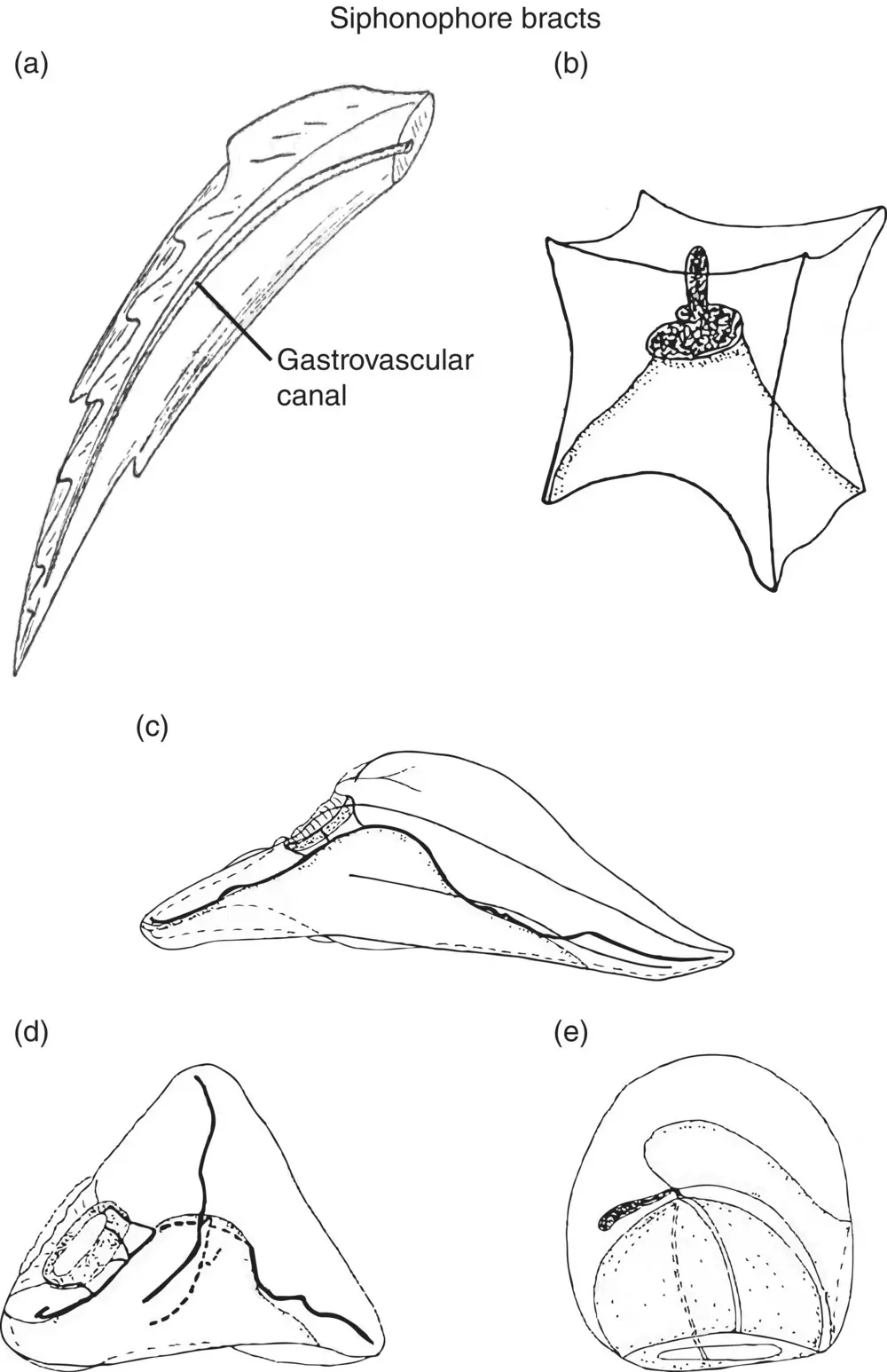
Figure 3.28 Siphonophore bracts. (a) Basic leaf‐shaped bract, suborder Physonectae. (b) Calycophoran, Enneagonum hyalinum ; (c) Calycophoran, Nectopyramis natans; (d) Calycophoran, Nectopyramis thetis ; (e) Calycophoran, Sphaeronectes gracilis . Sources: (a) Hyman (1940); figure 148 (p. 470); (b) Pugh (1999), figure 3.140 (p. 510); (c–e) Pugh (1999), figures 3.141, 3.142, 3.143 (p. 500).
Pneumatophores are the gas‐filled floats of the physonects and cystonects, and like the nectophores, bracts, and gonophores, they also are medusoid in origin. As observed by Hyman (1940), a pneumatophore may be thought of as an inverted medusan bell. The outer wall is termed the pneumatocodon, and the inner subumbrellar wall is termed the pneumatosaccus. The usual mesoglea that would reside between the inner and outer layers of the bell is absent, but the walls of the pneumatocodon and pneumatosaccus retain the usual epidermal and gastrodermal cell layers ( Figure 3.29). Inner and outer walls are very robust, as would be expected for a structure that must retain gas under pressure. The air sac is reinforced with a lining of chitin. At the bottom of the air sac is a gas gland that secretes the gas into the pneumatophore. The composition of the gas is 85–95% nitrogen, 1.5% argon, and 7.5–13.5% oxygen or roughly equivalent to air. Figure 3.29shows the simple pneumatophore of Agalma , but they do get more complex, sometimes adding reinforcing septa between the inner and outer walls of the air sac and more highly developed gas glands. In some genera, Rhyzophysa , for example, an apical pneumatophore can be utilized to dump the gas within the bladder. Such pores are held tightly shut with a sphincter muscle when present.
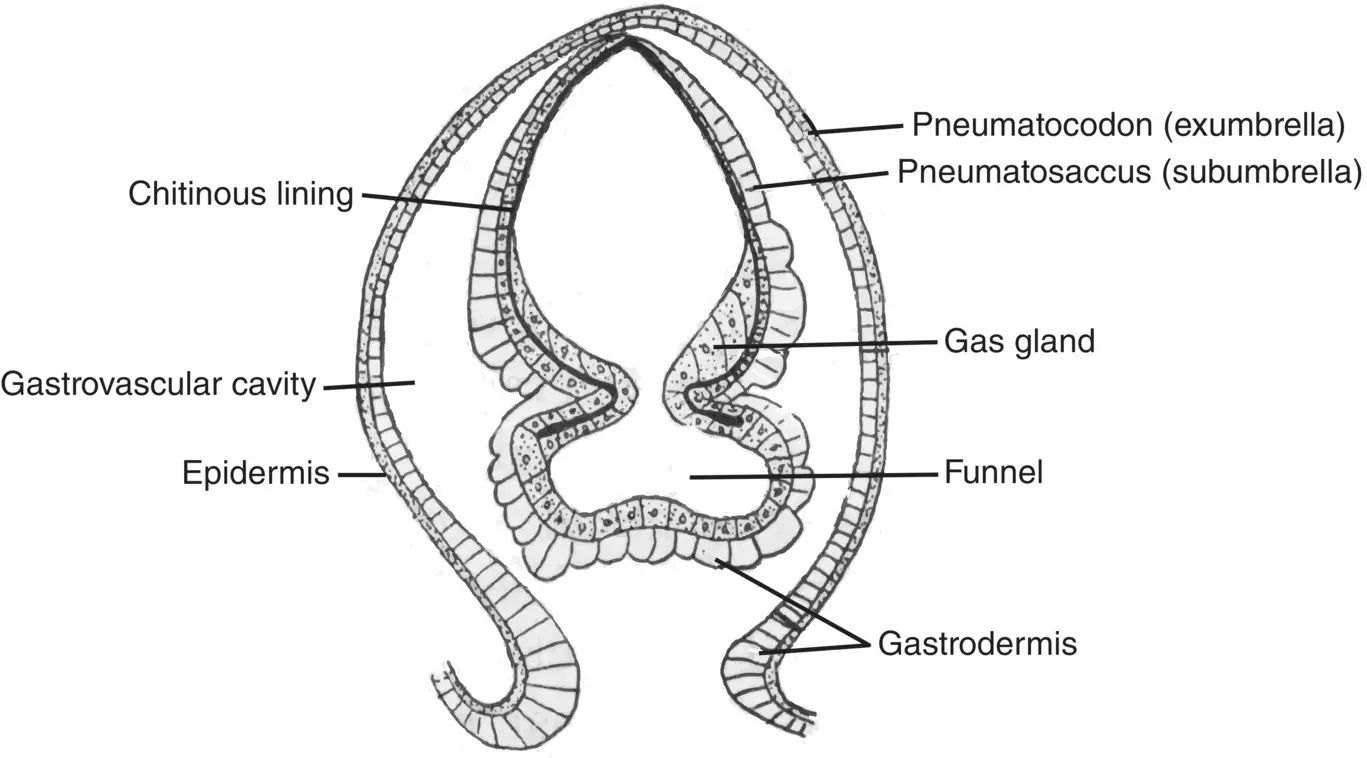
Figure 3.29 Vertical section of the simple type of pneumatophore of Agalma .
Source: Adapted from Woltereck (1905).
Whole Animal Organization
All zooids of the siphonophore colony are budded from and contiguous with a central stem ( Figure 3.30). The stem is a robust tube that varies from a couple of centimeters to several meters in length depending on the species and is capable of expanding and contracting. It has a typical cnidarian two‐layered structure with a thick mesoglea and a central canal ( Figure 3.30a). Canals of the siphonophore persons are all continuous with the central canal of the stem. The stem canal originates at the apex of the colony, either as a somatocyst ( Figure 3.30b), a rounded end in the calycophorae, or as a continuation of the gastrovascular canal of the float ( Figure 3.30c). Note the continuity of the stem canal with that of the persons in Figure 3.30c. In some species such as Physalia , the Portuguese man‐o‐war, the “stem” is really more of a disk that is contiguous with the wall of the float and the zooids are budded from beneath it ( Figure 3.30d).
Читать дальшеИнтервал:
Закладка:
Похожие книги на «Life in the Open Ocean»
Представляем Вашему вниманию похожие книги на «Life in the Open Ocean» списком для выбора. Мы отобрали схожую по названию и смыслу литературу в надежде предоставить читателям больше вариантов отыскать новые, интересные, ещё непрочитанные произведения.
Обсуждение, отзывы о книге «Life in the Open Ocean» и просто собственные мнения читателей. Оставьте ваши комментарии, напишите, что Вы думаете о произведении, его смысле или главных героях. Укажите что конкретно понравилось, а что нет, и почему Вы так считаете.
